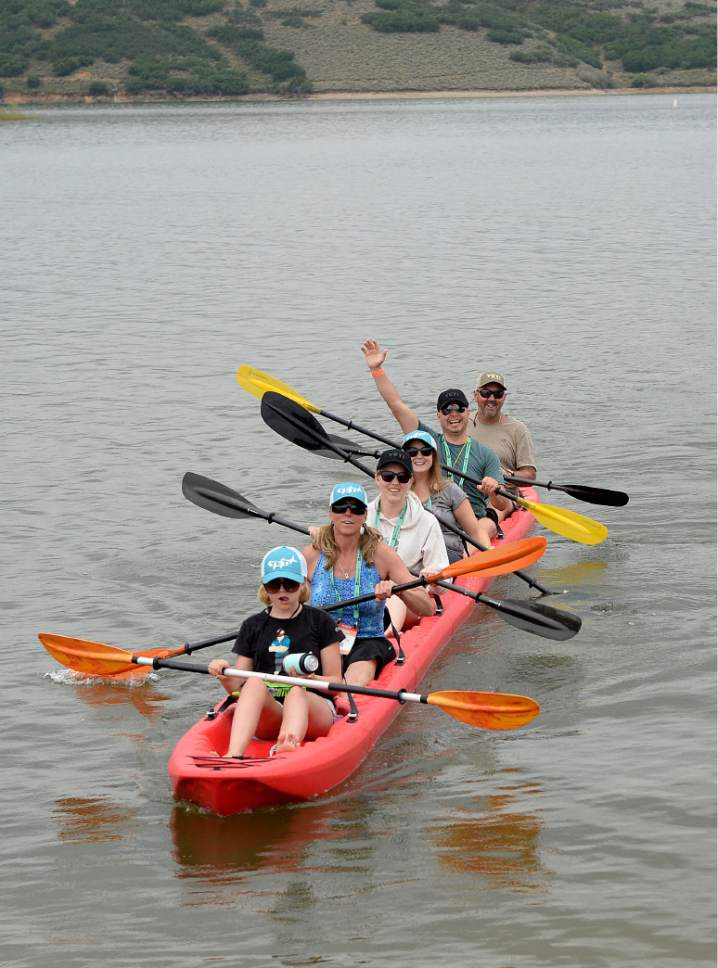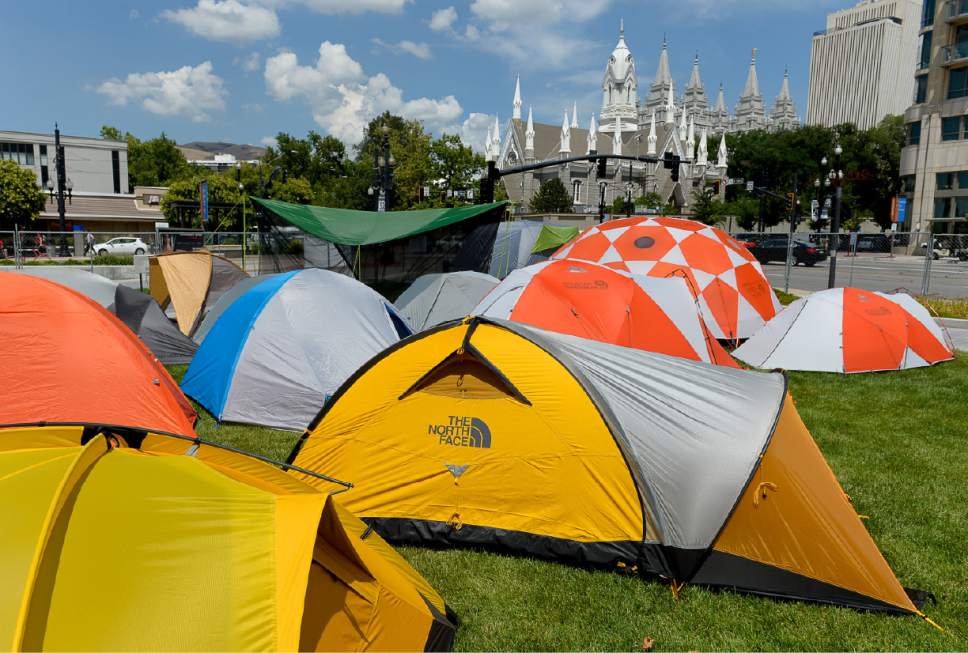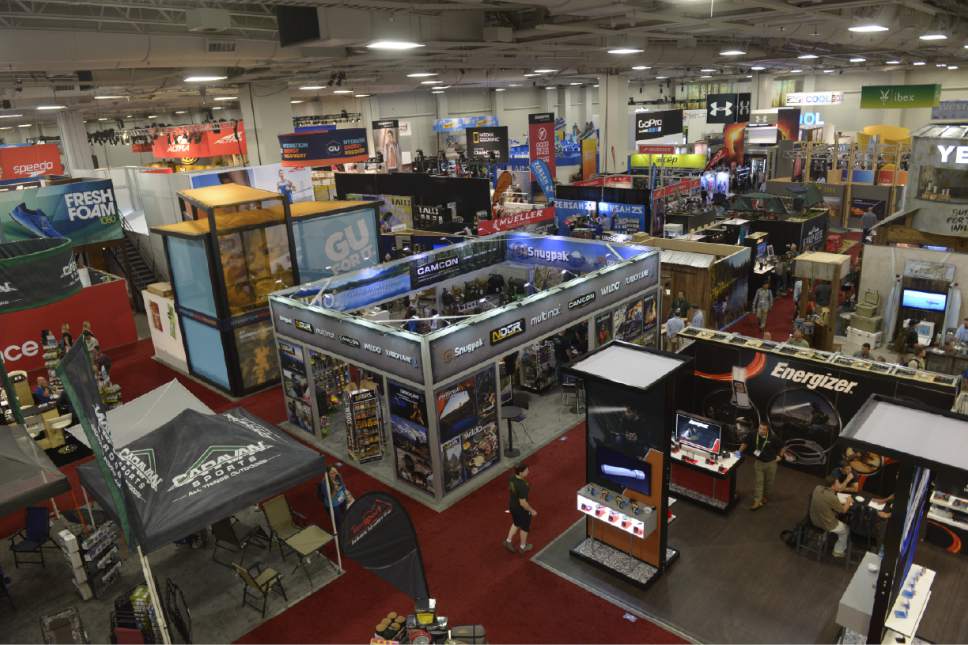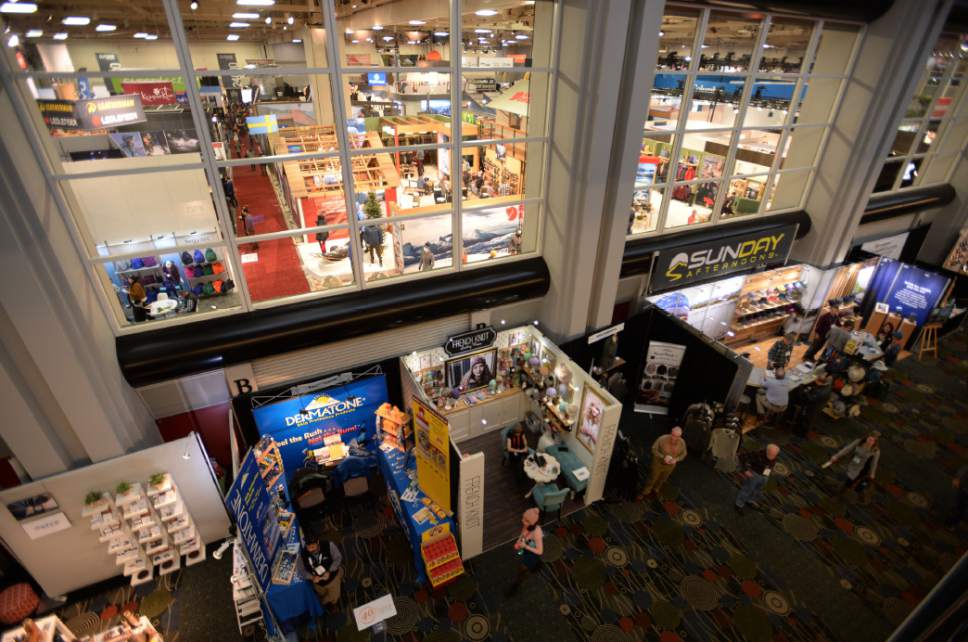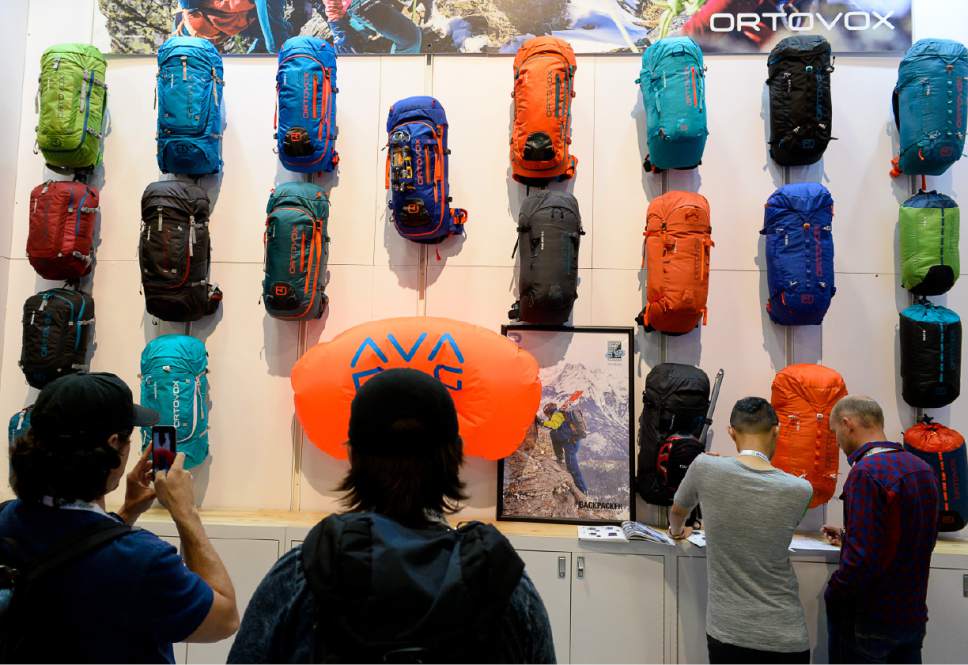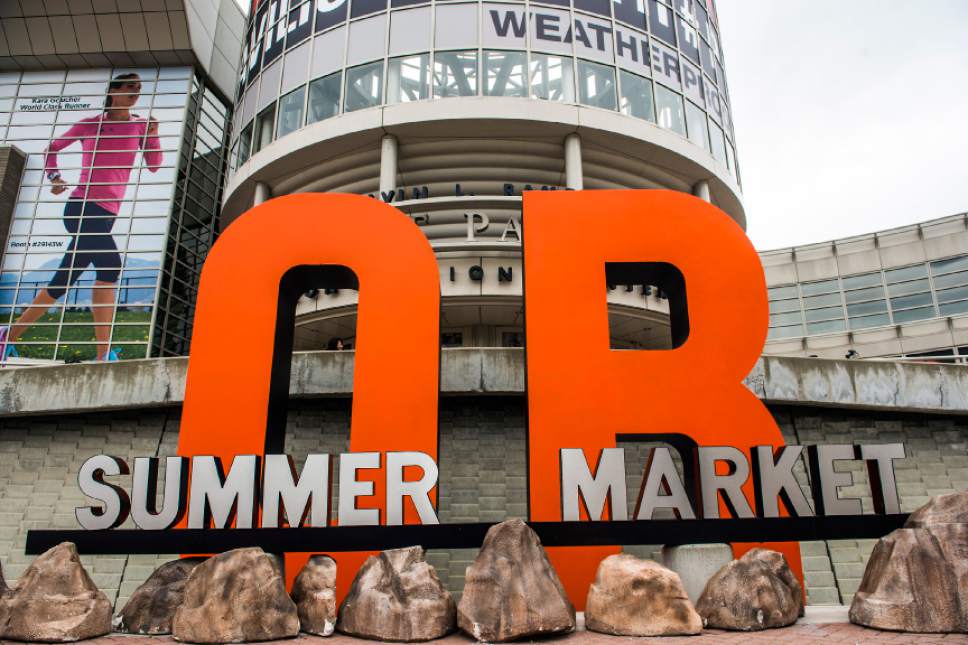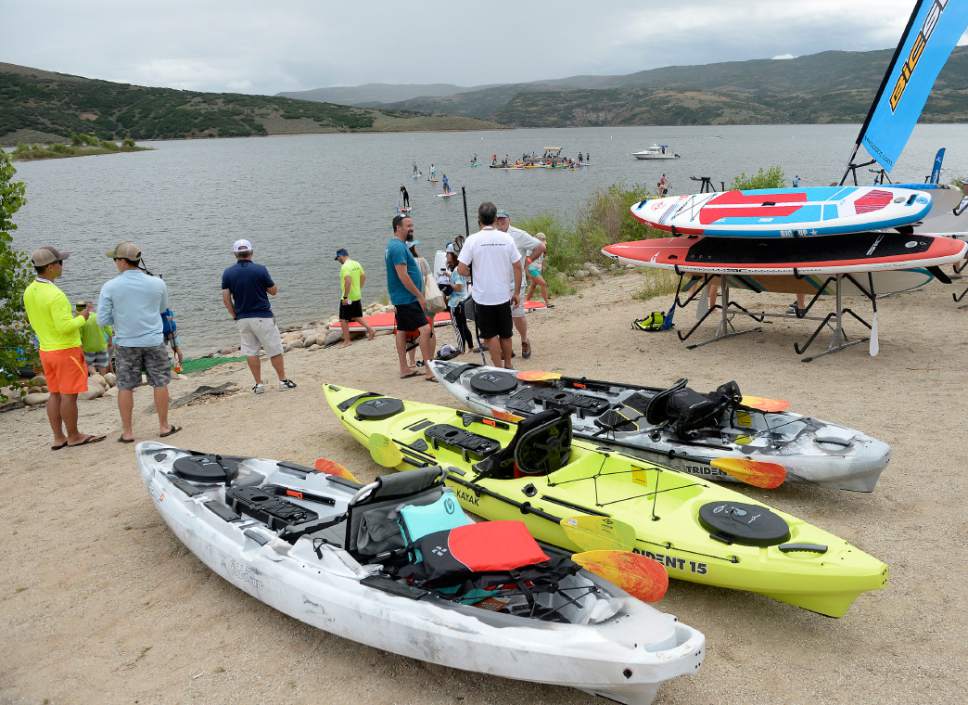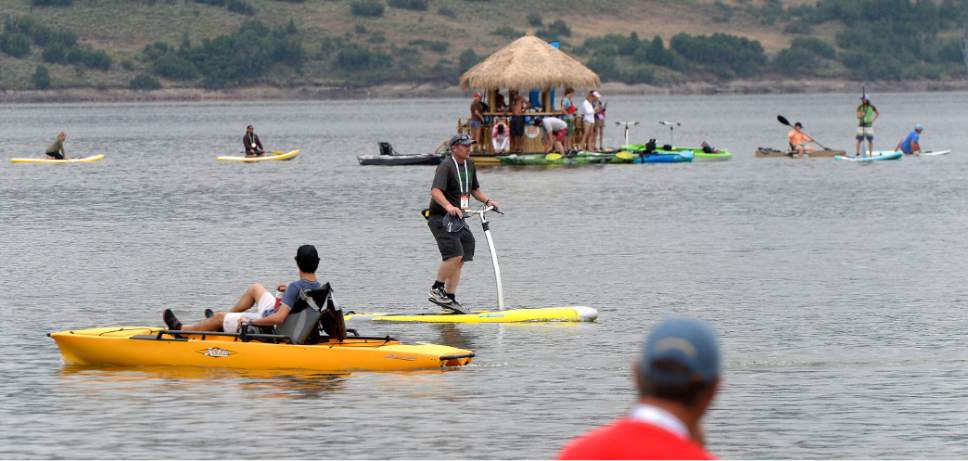This is an archived article that was published on sltrib.com in 2017, and information in the article may be outdated. It is provided only for personal research purposes and may not be reprinted.
The Outdoor Retailer trade show moved to Salt Lake City in 1996 during much simpler times with much more basic gear.
The iPhone wouldn't be invented for another 11 years, meaning folks going outdoors didn't feel the need to be connected. In those days, solar power chargers seemed like a faraway concept and electric lanterns the height of innovation.
Basics such as boots, sleeping bags, climbing gear, clothing, camp stoves, tents and coolers dominated the floor space.
But new and exciting gear kept coming, from electric bicycles to solar chargers to waterproof ukuleles to gasoline-powered blenders to portable waterproof speakers to gear for outdoor-loving pooches.
Utah's wild ride with Outdoor Retailer, a show now moving to Denver for at least the next five years, ended Saturday.
What had been the state's most important convention survived a bout with a tornado and often inadequate facilities.
The winter and summer trade shows spurred a large Salt Palace expansion, plans for a new convention hotel and growth in the local outdoor manufacturing industry.
The response to that 1999 tornado said much about this industry. The major outdoor pavilion was destroyed, many manufacturers lost their goods and displays, and a Las Vegas man working as a contractor for exhibitors was killed by a falling beam.
But in an emergency meeting in the lobby of the Salt Lake Marriott just hours after the tornado hit, it was decided that the show would go on. Competitors banded together to offer booth space to companies that no longer had a place to display their wares.
This sense of teamwork was on display over the years as the show kept growing.
The industry would get more political, lobbying for more wilderness, parks and monuments. Companies would regularly hear from politicians such as former Interior Secretaries Sally Jewell, Dirk Kempthorne and Ken Salazar. Inspirational speakers such as filmmaker Ken Burns and kids nature advocate Richard Louv often provided the industry with a voice and a soul.
Each show, and this final one would be no exception, included non-profit booths promoting access, kids participation, wilderness, hiking and the value of public lands.
Manufacturers would often sponsor projects at local schools, donate gear to youth groups or clean up parts of the valley such as the Jordan River.
The thousands who descended on Utah each year also brought a vibe that always improved Salt Lake City. There were outdoor concerts, demo days at lakes and on ski slopes and crowds in restaurants and bars. Colorful displays of all things outdoors often surrounded the Salt Palace.
The manufacturers seemed to love Utah so much that many moved their companies here.
Ultimately, though, the social consciousness, spirit of industry cooperation and love for the land that fueled the Salt Lake City show for 22 wonderful years forced the move.
Outdoor manufacturers and retailers could no longer stomach the anti-public lands, anti-monument, anti-environment and pro-development policies of the Beehive State and many of its politicians.
So they will now take their love of outdoor places to Colorado, a state that seems more inclined to preserve wilderness and treasure public lands.
That did not mean that the folks who came to these twice-a-year trade shows were anxious to leave Salt Lake City.
The last day of any Outdoor Retailer is always a weird, quiet experience. Fewer people are on the floor. Some of the fancy booths are starting to be dismantled. And participants often purchase gear at wholesale prices from companies that don't want to ship it home.
Saturday's final day was especially sad. The word most often used to describe the mood was "bittersweet." No one, even folks from the Denver area, seemed particularly happy to be moving away from the Salt Palace, a place that provided an industry a venue where it would grow up and prosper.
People on the floor praised Utah's scenery, its hospitality, its proximity to ski hills and mountain biking trails and its restaurants and hotels.
As someone now in his late 60s who has covered close to 40 of these events, walking out into the brilliant Salt Lake sun Saturday after seeing the latest cool gear inside the Salt Palace and pavilions brought a sort of melancholy closure.
Change is often good, both for industry and people. Business and politics can be harsh. It can be survival of the fittest.
Unfortunately but perhaps correctly, Salt Lake lost its biggest annual trade shows because Utah was deemed no longer fit to host them.
So, goodbye, Outdoor Retailers. You will be missed not only for the dollars you brought to Utah but for your spirit, your passion, your environmental commitment and the enthusiasm for what you do.
Twitter @tribtomwharton


